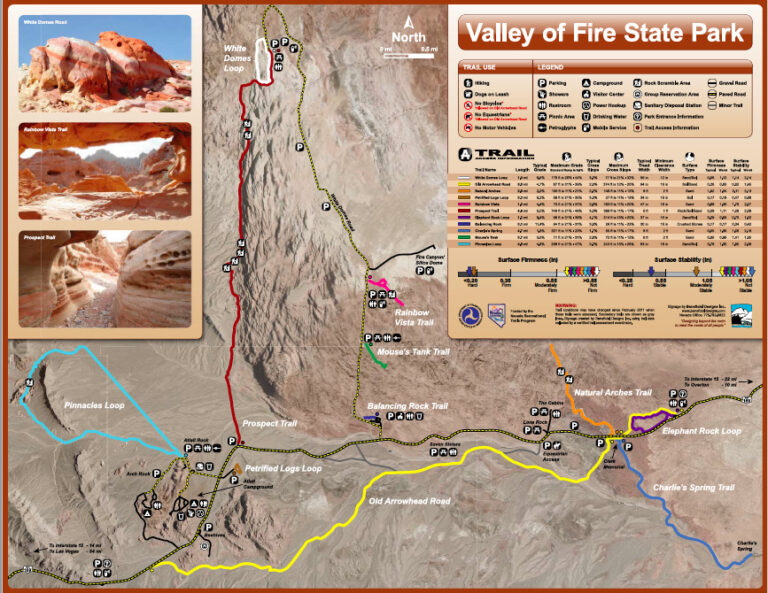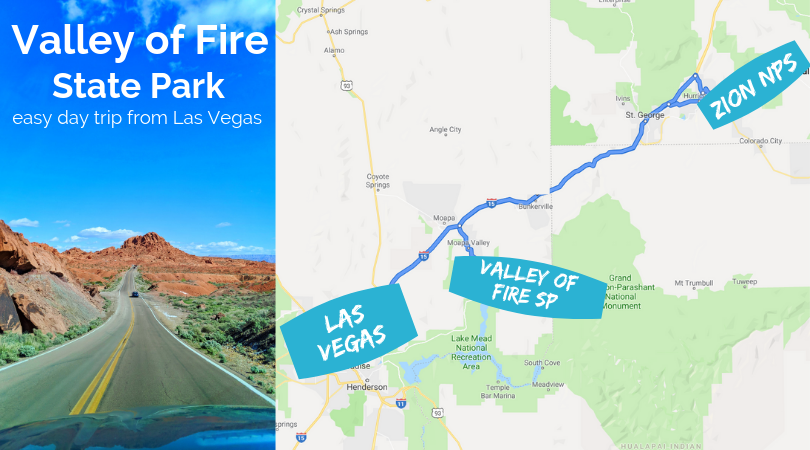
All through traffic along NV 169 has to pay a fee to cross the state park ($20 in 2021), yet still the highway can become quite busy in summer, and forms part of a scenic diversion between Las Vegas and I-15 to the north - the journey involves an extra 55 miles, but is much more interesting than the interstate, which passes rather barren land between Las Vegas and the Arizona border.ĭriving to the Valley of Fire from east or west is equally scenic.
MAP OF VALLEY OF FIRE STATE PARK FREE
East of the state park, the nearest free camping is along side tracks leading into dusty hills a few miles south of Overton. Just before the hills, a track leaves to the south and leads to some old gravel piles and scattered concrete relics after half a mile, a place that makes a perfect (if rather lonely) place to camp - in sight of the distant interstate but many miles from any settlement. Access from the west starts at I-15 exit 75, from where NV 169 ( Valley of Fire Road) crosses a vast desert plain for 7 miles then winds through a range of low, arid hills to the park entrance. The approach to Valley of Fire State Park from the north is along straight roads across the wide valley of the Muddy River, through Logandale then Overton, which is a small town but one that has all necessary facilities.

The landscape is made more striking by the surrounding black hills of somber appearance. It is one of the most photogenic locations in the Southwest, especially at sunset when the rocks glow deep red and do indeed seem to be ablaze when seen from a distance. The drive to the area from the south ( state road NV 167) passes buckled, layered cliffs and desert basins, often quite colorful, and has occasional views over the blue waters of Lake Mead to the east, but the valley is the most unusual place in the area. The largest visitors center in all of Nevada’s state parks, the Valley of Fire Visitors Center offers interpretive information of the area’s natural history, geology, plants, and wildlife, as well as information about how Indian tribes survived in such a harsh environments.New Mexico has a Valley of Fires Recreation Area, containing a large expanse of black, twisted lava deposits set amongst barren land in the center of the state, but the similarly named park near Overton, 30 miles northeast of Las Vegas in Nevada offers a stark contrast - here, red is the dominant color, next to large expanses of contrasting pale yellow rock, both part of an undulating landscape of petrified dunes, strangely-shaped boulders and sheer sandstone cliffs set amongst an empty, very scenic region near the north end of Lake Mead. Valley of Fire has campgrounds, picnic sites and numerous hiking trails. Just off White Domes Road is Silica Domes Road, with an overlook to yet another impressive rock formation. Valley of Fire Road runs east to west, intersecting with White Domes Road which runs north and south, White Domes Road earns its name from the impressive white, rounded rocks that create a striking contrast to the surrounding reds. Rainbow Vista is a favorite with photographers for the panoramic view of multicolored sandstone. Valley of Fire State Park Scenic Byway will take travelers past geologic marvels such as Arch Rock, Piano Rock and Rainbow Vista. The rock formations rise from the desert floor, fluctuating from ground level to 499 feet high. Mimicking the dance of a flame, the rocks change from benign oranges and browns to deeper, more dramatic shades, while the sun and it’s shadows seem to mold the rocks into new shapes, Just after sunset and just after sunrise, when the rocks are particularly luminous, are the best times to see how the park got its name. Suggested driving times are fall through spring be cautious of the severe desert heat in the summer.

Although the state byway totals eight miles (the distance from the park entrance to SR 169) the surrounding Valley of Fire State Park is Nevada’s largest and oldest state park. Travel northeast from Las Vegas on I-15 about 30 minutes to the Valley of Fire interchange (exit 75), then south and east to the park boundary. In between Las Vegas and Lake Mead lies Valley of Fire, an impressive canvas of wind-sculpted red sandstone that transforms with each slight movement of the sun.


 0 kommentar(er)
0 kommentar(er)
